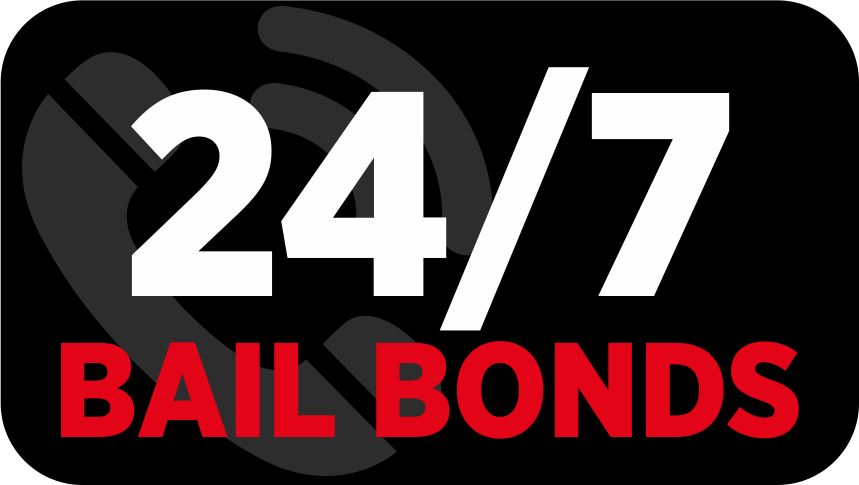Bail Bonds Canton Ohio: Quick and Trustworthy Bail Solutions
Bail Bonds Canton Ohio: Quick and Trustworthy Bail Solutions
Blog Article
Recognizing How a Bail Bond Works and Its Effect on the Lawful Process
The principle of a bail bond acts as an important system within the lawful process, allowing accuseds a pathway to protect their launch while awaiting test. By recognizing the details of this process, including the roles of bail bondsmen and the economic effects, one can appreciate how accessibility to bail substantially influences lawful outcomes. Differences in bail affordability raise pressing questions regarding systemic inequalities and their broader societal effect. What consequences emerge when the capacity to pay determines one's liberty? Discovering these dimensions reveals an intricate interplay deserving of further assessment.
What Is a Bail Bond?
A bail bond is a lawfully binding arrangement that functions as a financial assurance for the launch of an implicated person from prison while they wait for trial. This device permits defendants to secure their momentary flexibility by offering a financial assurance to the court that they will certainly show up for all set up hearings - stark county bail bonds. The bond quantity is normally established by a judge based on aspects such as the severity of the infraction, the defendant's criminal background, and the danger of flight
bail bonds can be published by the defendant or with a Bail bondsman, that charges a non-refundable cost, typically a percentage of the total bail amount, for assuming the monetary threat. If the offender stops working to appear in court, the bail bond comes to be surrendered, and the court may provide a warrant for the person's apprehension. In such cases, the bondsman is frequently charged with locating and capturing the accused to mitigate their financial loss.
In essence, bail bonds offer an important role in the judicial system by balancing the presumption of innocence with the demand to make certain court looks, hence assisting in the accused's right to get ready for their situation outside of incarceration.

The bail Process Discussed
Navigating the bail process can typically feel overwhelming for those strange with the lawful system. The bail procedure typically starts after an individual is detained and scheduled. At this factor, a court will determine the bail amount, which is meant to make certain the offender's look at future court days. Aspects influencing this choice consist of the nature of the claimed criminal activity, the accused's criminal background, and their ties to the neighborhood.
Once the bail quantity is set, the offender or their representative can select to pay the sum total in cash money, organize for a bail bond, or request a Bail hearing for a possible reduction. If a bail bond is picked, an accredited bail bondsman normally charges a non-refundable cost, usually around 10% of the complete bail amount, for assuring the court that the offender will show up for all needed procedures.
Upon repayment, the bondsman will publish the bail with the court, protecting the defendant's release. It is necessary for the accused to follow all court dates; falling short to do so can result in the loss of the bail and extra legal repercussions.
Sorts Of bail Bonds
bail bonds been available in various types, each created to fulfill different demands and scenarios within the legal structure. The most typical type is the surety bond, where a Bail bondsman supplies the full bail quantity for a charge, generally 10-15% of the total bail. This setup permits accuseds to secure their release without requiring to pay i thought about this the whole bail upfront.
Another type is the cash money bond, which needs the offender or a 3rd party to pay the full bail amount in money. This choice is usually preferred for its simpleness, as the cash money is returned upon the accused's court look, minus any management fees.
Residential property bonds involve utilizing real estate as collateral for bail. The home must be valued at or over the bail quantity, and if the offender stops working to show up in court, the court may seize the home.
Lastly, there are federal bonds, made particularly for federal instances, which frequently carry various terms and conditions. Understanding these numerous kinds of bail bonds is crucial for defendants and their families as they browse the complexities of the lawful system. Each type offers a distinct function, ensuring a variety of alternatives for securing launch from safekeeping.

Role of bail Bonds in Lawful Outcomes
Usually neglected, the duty of bail bonds significantly affects lawful results for accuseds. bail acts as a mechanism to make certain that individuals waiting for test can continue to be devoid of imprisonment, hence enabling them to get involved more effectively in their defense. The schedule of bail bonds enables offenders that might not have the economic means to upload bail directly to secure their release, which can lead to a lot more beneficial lawful results.
When defendants are out on bail, they have the chance to gather evidence, consult with legal advice, and prepare their instance without the stress of jail confinement. This increased access to resources and support can lead to improved chances of negotiating appeal deals or receiving a much more tolerant sentence. Moreover, the capacity to keep work and household connections while waiting for trial can contribute to an extra favorable perception in court.

Ramifications for Offenders and Society
The implications of the bail bond system expand past specific offenders, affecting culture as a whole. For several accuseds, particularly those from lower socioeconomic backgrounds, the failure to manage bail can cause prolonged pretrial detention. This circumstance usually results in work loss, interrupted family characteristics, and increased likelihood of begging guilty to lesser costs to safeguard release, no matter of actual regret.
Moreover, the societal consequences are significant (stark county bail bonds). A high reliance on bail bonds can continue inequalities in the justice system, as wealthier individuals can safeguard their flexibility extra quickly while poorer offenders remain incarcerated. This variation elevates honest concerns regarding the justness of the legal procedure and the wider implications for public depend on in the justice system
Furthermore, pretrial detention can rise criminal behavior, adding to higher relapse rates and raised strain on neighborhood sources. The bail bond system, for that reason, not just affects the immediate circumstances of offenders yet also has far-reaching results on social security and public security. Dealing with these implications is essential for developing a more equitable lawful structure that safeguards both individual legal rights and the broader interests of culture.
Final Thought
Finally, comprehending the technicians of bail bonds is vital for browsing the lawful system efficiently. The capability to secure short-term launch from imprisonment through the repayment of a bond dramatically influences legal outcomes for accuseds, enabling for better prep work of their defense. Moreover, the ramifications of bail bonds extend past private instances, revealing systemic inequalities that affect areas and add to wider social issues, such as regression and hop over to these guys economic instability.
The idea of a bail bond serves as an essential system within the lawful process, enabling accuseds a path to protect their release while waiting for trial. By recognizing the intricacies of this procedure, including the duties of bail bondsmen and the economic effects, one can appreciate exactly how access to bail significantly influences lawful outcomes.bail bonds can be published by the offender or with a Bail bondsman, who charges a non-refundable charge, usually a portion of the complete bail amount, in exchange for presuming the monetary threat. The most typical type is the surety bond, where a Bail bondsman supplies the full bail amount for a charge, normally 10-15% of the complete bail. The schedule of bail bonds allows offenders that might not have the economic means to publish bail straight to safeguard their launch, which can lead to extra favorable lawful end results.
Report this page